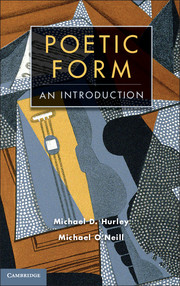Chapter 7 - Dramatic Monologue
Published online by Cambridge University Press: 05 November 2012
Summary
To prepare a face to meet the faces that you meet …
T. S. Eliot (The Love Song of J. Alfred Prufrock)All monologues are dramatic. A single person speaking is always addressing that speech to someone, even if only to himself or herself. As a poetic genre, however, the dramatic monologue entails something more than the mere ‘drama’ of articulation and audience. Verse monologues appear as far back as Anglo-Saxon poetry, as seen in, for instance, The Seafarer, The Wanderer and The Wife’s Lament. But whereas such poems offer the poet’s voice, dramatic monologues – which did not emerge as a distinct genre until the late nineteenth century – offer a poetic persona, a fictional voice.
The distinction between a monologue that is dramatic and the genre known as the ‘dramatic monologue’ may therefore be simply stated. Yet readers are rarely willing to concede such a neat categorisation. As was discussed in the chapter on elegy, artifice does not exclude the possibility of authenticity; confection and confession may blur. In the Victorian period, when the dramatic monologue was first popularised and arguably enjoyed its highest achievement, fictional characters were frequently believed to express the beliefs and desires of their creators. It is tempting to imagine that modern readers are beyond this kind of apparently naive confusion. But the confusion today is, if anything, even greater. Whereas Victorian readers might take (or mistake?) the poem for the poet, modern critics tend towards the opposite error: all confessional verse is treated as if it were fiction. One reason for this is that the novel has become the main form of literary consumption; as such, Jonathan Culler observes, narrative is treated not as one possible literary form but as the very condition of experience. Reacting against the notion of lyric as expression of intense personal revelation, criticism and pedagogy has ‘adopted the model of the dramatic monologue as the way to align poetry with the novel: the lyric is conceived as a fictional imitation of the act of the speaker, and to interpret the lyric is to work out what sort of person is speaking, in what circumstances and with what attitude or, ideally, drama of attitudes’.
- Type
- Chapter
- Information
- Poetic Form , pp. 167 - 188Publisher: Cambridge University PressPrint publication year: 2012

